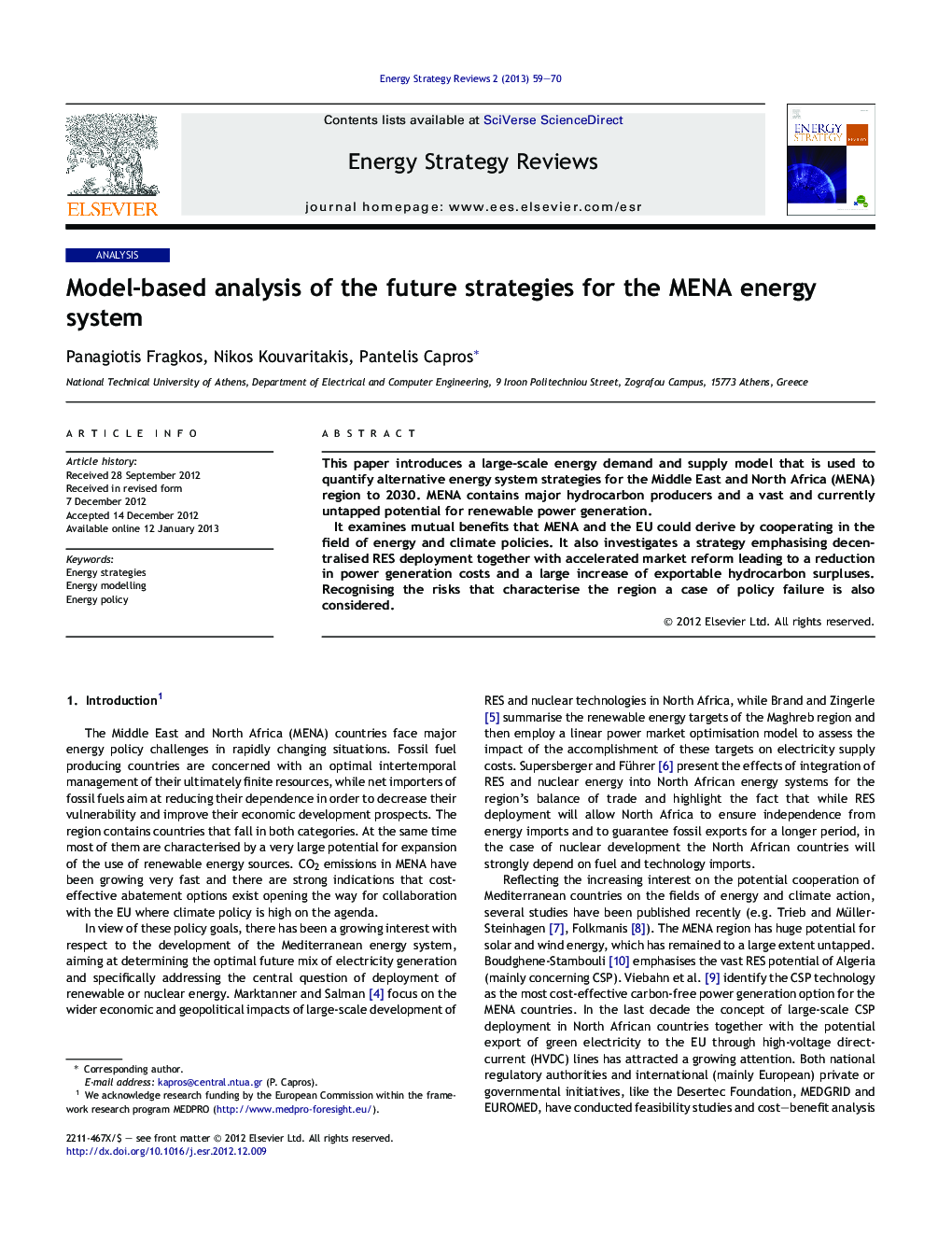| کد مقاله | کد نشریه | سال انتشار | مقاله انگلیسی | نسخه تمام متن |
|---|---|---|---|---|
| 1029889 | 942751 | 2013 | 12 صفحه PDF | دانلود رایگان |

This paper introduces a large-scale energy demand and supply model that is used to quantify alternative energy system strategies for the Middle East and North Africa (MENA) region to 2030. MENA contains major hydrocarbon producers and a vast and currently untapped potential for renewable power generation.It examines mutual benefits that MENA and the EU could derive by cooperating in the field of energy and climate policies. It also investigates a strategy emphasising decentralised RES deployment together with accelerated market reform leading to a reduction in power generation costs and a large increase of exportable hydrocarbon surpluses. Recognising the risks that characterise the region a case of policy failure is also considered.
► We develop a technology rich integrated energy demand and supply model for MENA.
► We quantify alternative strategies for the MENA energy system.
► Reorientation and restructuring of the MENA energy system can be cost effective.
► Market reform, RES development and efficiency are the keys to modernisation.
► Policy failure carries considerable risks of un-sustainability.
Journal: Energy Strategy Reviews - Volume 2, Issue 1, June 2013, Pages 59–70